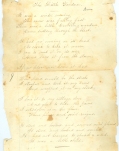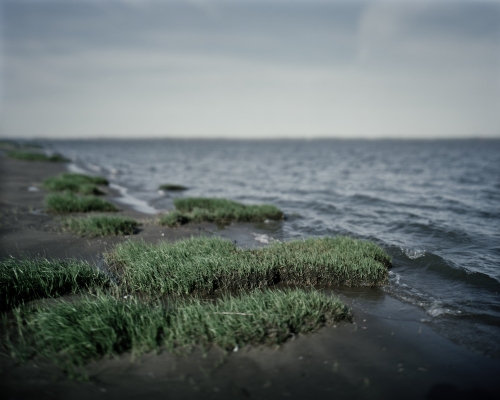Listen to story: A Poet describes her escape Listen to more: Saunders’ poem “The Little Wanderer”Map this location: 798 Salem-Ft. Elfsborg Rd., Elsinboro, NJ 08079 (Alloway Creek Watershed Parking Area)
Esther “Hetty” Saunders (c 1793-1862) and Amy Reckless (see: “How one woman set herself free”) were the same age and both were born into slavery, but their lives were very different. Hetty Saunders’ family fled enslavement in Delaware in 1800. Pursued by slavecatchers, her father sought a safe haven for his daughter in the home of Joseph and Ann Hall in Elsinboro, NJ, not far from where they crossed the Delaware River. Although hesitant to shelter the young girl, the Halls agreed to keep her until her father’s return. By the time he came back for his daughter, she had endeared herself to the Quaker family, who convinced him to let her stay with them permanently. This fateful turn of events shaped the rest of her life, for she remained with the Halls and their daughters in Elsinboro and Mannington until her death (1).
 Despite the fact that the Halls treated her with kindness and provided for some level of education (2), her early life must have been difficult and somewhat isolated. As a Black woman, she lived as an outsider within Salem’s white Quaker community, even though that number included such remarkable people as the Goodwin Sisters. Saunders found in poetry a way to express her feelings and ultimately to create a rare and remarkable literary legacy. Using allegory and symbolism, Saunders subtly conveyed the strictures of the world in which she lived as a woman of color. Clearly she wrote mostly for herself – none of her works were published during her lifetime.
Despite the fact that the Halls treated her with kindness and provided for some level of education (2), her early life must have been difficult and somewhat isolated. As a Black woman, she lived as an outsider within Salem’s white Quaker community, even though that number included such remarkable people as the Goodwin Sisters. Saunders found in poetry a way to express her feelings and ultimately to create a rare and remarkable literary legacy. Using allegory and symbolism, Saunders subtly conveyed the strictures of the world in which she lived as a woman of color. Clearly she wrote mostly for herself – none of her works were published during her lifetime.
Hall family descendents preserved the slim portfolio of her writings, a biography and a pencil portrait, which were donated to the Salem County Historical Society. The Society published her work in 2001.
Hetty Saunders rests in the Salem Friends Burial Ground much as she lived. She is buried along the outer perimeter of the property next to many of the Quakers she knew and served, but at last no longer in the shadows. Her gravesite is part of the NJ Women’s Heritage Trail (3).
(1) Donald L. Pierce, ed., I Love to Live Alone: The Poems of Esther “Hetty” Saunders, Salem, NJ: Salem County Historical Society, 2001. Pierce’s monograph includes a biography and all poems attributable to Saunders with annotations.
(2) Saunders is said to have read all the books in the Hall household, especially the Bible. Pierce, 8.
(3) Deborah Marquis Kelly and Ellen Freedman Schultz, New Jersey Women’s Heritage Trail, Trenton, NJ: NJ Department of Environmental Protection, n.d., 106.

